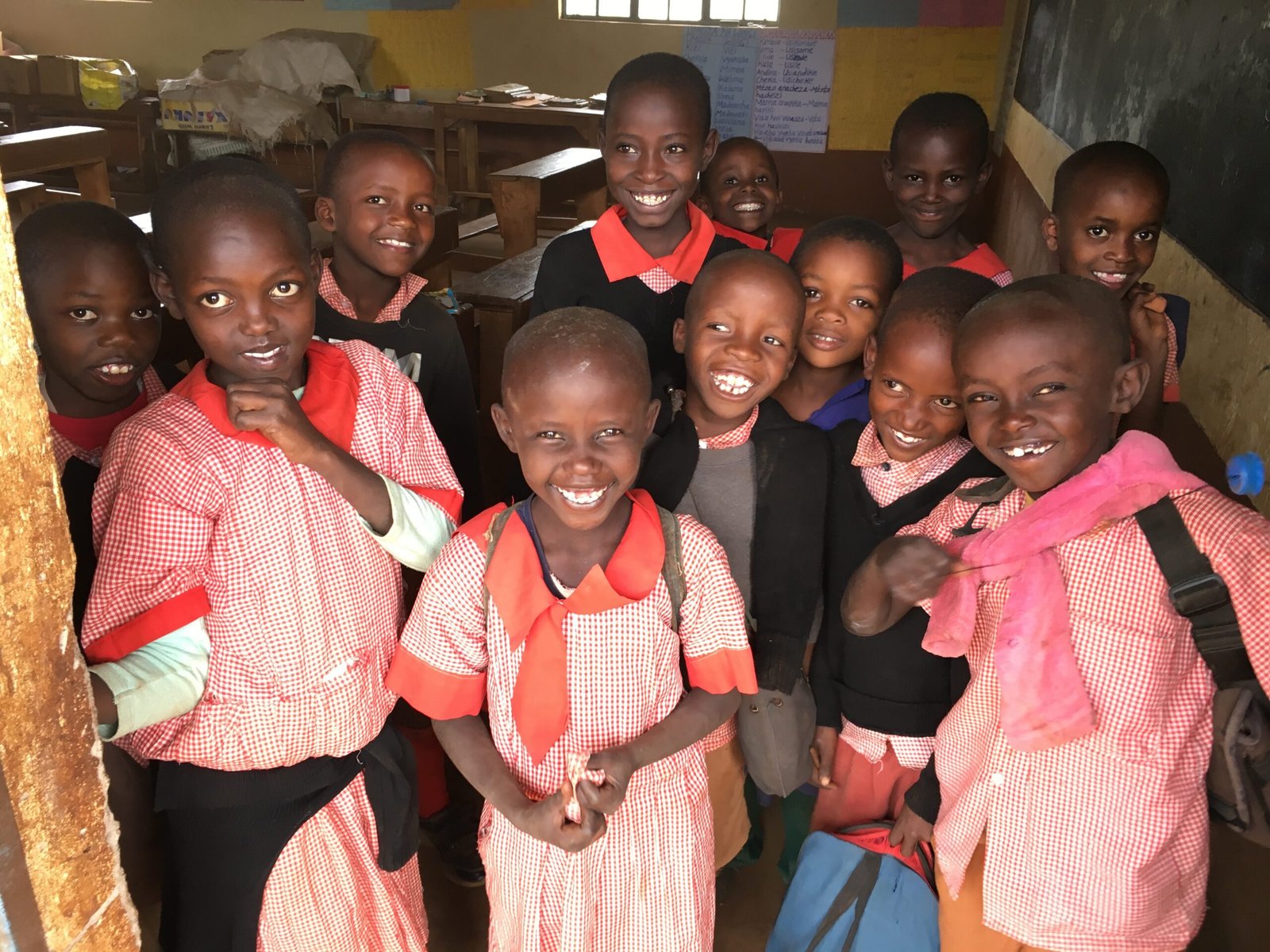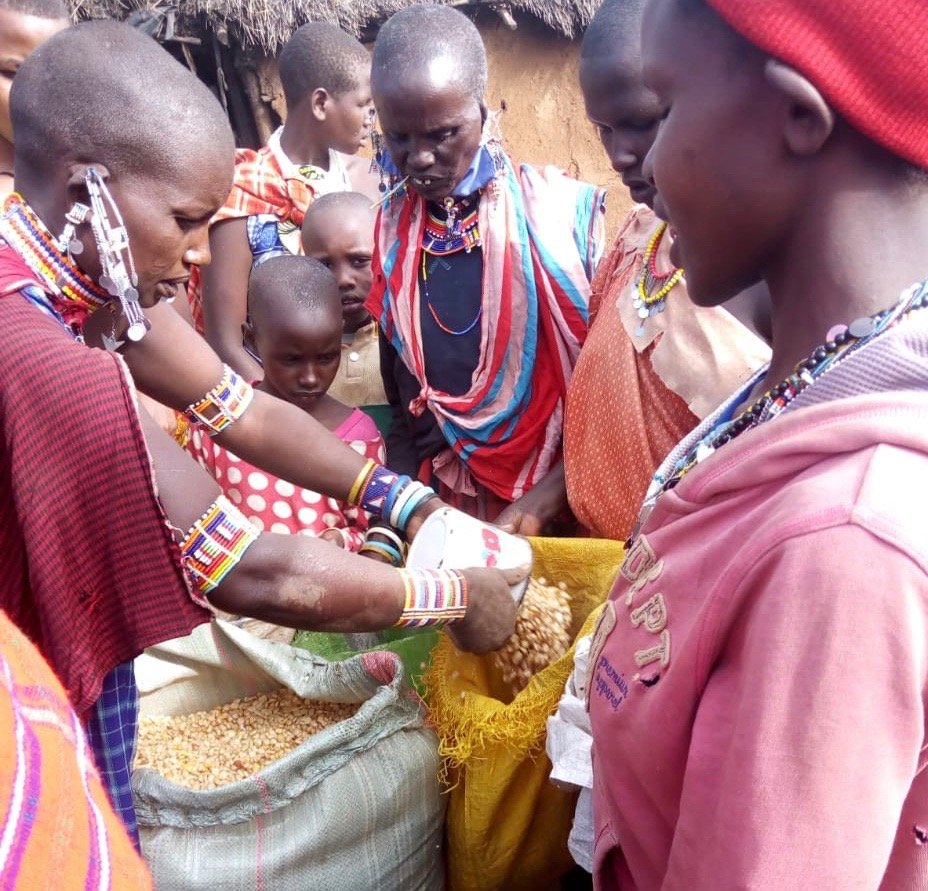Partnering with Pillar of Maasai Development (PMD)
The Maasai people of Eastern Africa are possibly the most famous tribe in Africa. They are proud, dignified, and rugged people known for their spears, traditional dress and beadwork, jumping, and fearlessness. More than any other tribe, they have lived in harmony with the wild animals of the savannahs. Their pride is in their cattle, which they traditionally believe God granted to them uniquely. And their lives center around their herds. The Maasai of Kajado, Kenya, in Mt. Kilimanjaros eastern shadow lost the majority of their grazing lands and watering holes to the Tsavo game reserves in the 1940s. In the 1990s, they were expelled from these lands entirely, leaving them on a small strip of land between the game reserve and Mt. Kilimanjaro. Insufficient land led to overgrazing and to this community's tumble into poverty. In 200 the community-based organization Pillar of Maasai Development was established to address community needs in education, economic opportunities, health, and agriculture. In 2003 ADEAs the director was introduced to this community through Tipape Lomu. This introduction led to the establishment of two primary schools, the Ornaments for Hope women's economic development initiative, the 2009 drought emergency food program for students, the 2020 COVID-19 emergency food distribution program, and, most recently, our Maasai food security agricultural program.
Establishing Lemong’o and Esukuta Primary Schools
With the rapid loss of cattle due to expulsion from Maasai-lands, this community leaders realized that their children could not continue their tradition as cattle herders. This brought about their desire for schools. In early 2006, Douglas met this community through PMD leader Tipape Loomu. By the end of 2006, through prayer, creativity, and financial gifts from friends, we had opened our first kindergarten in Lemong'o. Fourteen years later, there are two K-8 primary schools with over one thousand children studying. Amidst the poverty and hardship of their homes and community, these Maasai, their teachers, and the ADEA Foundation have remained committed to providing education. Though it has been a long, challenging process to maintain and grow these schools, student performance, based on exams, is some of the highest in the district. [For more history visit: http://adeaafrica.org/PMD.html

Ornaments for Hope (O4H)
In 2010 response to the economic crisis left by the extreme cattle loss during the drought of 2009, ADEA explored economic development opportunities building on the long tradition of the famed beadwork of the Maasai women. Working with a US-based jewelry designer, we challenged a team of Maasai women to produce patterns in color combinations unfamiliar and unappealing to them but chosen for a targeted Western market for Christmas ornaments. Though a struggle, the women succeeded in making designs of high quality. For over half a decade, these Ornaments for Hope were sold at holiday markets in Seattle. With a lack of connections to buyers, this market did not grow. However, these women are ready and skilled for future production opportunities for their traditional and contemporary designs.

Emergency food program of 2009
The drought of 2007-2009 resulted in the loss of 98% of all the cattle in our schools and communities. Not only did this mean the families struggled to pay the low school fees, but there was also a concern for children's brain development. As a result, ADEA launched an emergency food program through which children received enhanced porridge in the morning and lunch at noon. Additionally, this Maasai community, which was traditionally exclusively meat, milk, and blood eaters, learned that different foods had different nutritional values. From this, they came to understand the importance of a varied, balanced diet and the nutritional value of various foods. Parents took this new understanding to their homes as they prepared more nutritious meals.
COVID-19 EMERGENCY FOOD PROGRAM 2020
Between March and August 2020, in response to the COVID-19 pandemic, Kenya went into severe lockdown. This meant that families dependent on daily wages from farm work or the
selling of firewood could not generate income to feed their families. Maasai families in our school area were facing starvation. With generous support from many individuals, ADEA
mobilized six months of food distribution with our local partner, Pillar of Maasai Development, for over 600 of the most vulnerable Maasai. Additionally, we ensured teachers' wages during the school closures. With our support, teachers met with students outside their homes to keep them learning during the lockdown, often just sitting on rocks on a hillside. When the lockdown ended (but schools remained closed), ADEA provided teacher development workshops. We also supplied them with a computer to research their classroom subjects, study through online programs, and find answers to students' challenging questions. They do all this from their school in the bush. [Visit 2020 Newsletters for more details]

FOOD SECURITY
A response to COVID-19 Lockdown
The COVID-19 lockdowns exposed the severe economic/food vulnerability of the Maasai in Rombo. Though traditionally pastoralist meat-eaters, they now have few to no cattle due to their
loss of grazing lands and drought. Their recent experience of near-starvation during lockdowns has made them open to learning farming techniques that could bring them a measure of food
security. Working with agricultural specialist Dara Finnegan, the three PMD members will learn to culture an acre of land. Dara guides and advises them on fertilizing, planting, and harvesting a
diversity of crops that grow in a low-water area and provide optimal yield and nutritional value. One blessed discovery is that elephant dung is an exceptional and abundantly available fertilizer.
Eventually, we aim to establish a learning center to teach viable ways for families with minimal resources to grow food at their homes to feed their family and livestock. Additionally, we will
develop curricula to introduce Maasai students to agricultural science.
FOR PAST HISTORY OF THIS PARTNERSHIP
CHANGING A HUMANITARIAN CRISIS INTO A HUMANITARIAN OPPORTUNITY
In 2021 the food security crisis of the Maasai expanded impacting even more families due to severe drought. It has grown from 85 families (600+ people) in 2020 to over 800 families (7000+ people)” . The severity of this drought is being compared to the drought of 2007-9 when most families lost 100% of their cattle. One community leader, Grace, had 200 cows in 2007 by the end of 2009, she had only one. Her story was not unusual. During that drought, families survived by eating their dying cattle. But this time, there are few cattle left to eat. These families have no food, and nothing is growing – not even grass for the few cows and goats that remain. ADEA intends to continue providing rations of beans, corn, oil, and salt through December – funds allowing.
However, we are taking advantage of the unique opportunity of nearly 1000 women” gathering every two/three weeks. While women wait to collect their food rations, they gather in small groups to learn about issues of literacy, food security through home gardens and discuss issues related to gender inequity, high birthrates, child brides, and empowering women who have been left to care for their families while men are away looking for work or are dead. Also, they enjoy a time of storytelling and singing.
